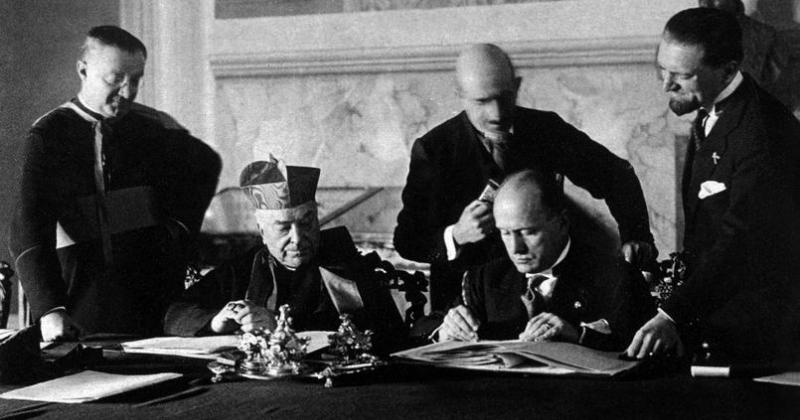February 11, 2019 was the 90th anniversary of the Lateran Treaty signed by the Holy See and Benito Mussolini’s government. This treaty put an end to the “Roman Question” that had gone unresolved since 1870 when Rome was taken by the Italian revolutionaries.
Benito Mussolini, the Prime Minister of the Italian government, and Cardinal Pietro Gasparri, Secretary of State, signed three documents at the Lateran Palace.
The first was a political treaty that put an end to the Roman Question; it defined the mutual relations between the Italian government and the Holy See in terms of international law. The Church surrendered her sovereignty over the former Papal States and for the first time ever recognized Italy as a kingdom with Rome for capital.
Vatican City became the smallest State in the world, neutral and independent, with a surface of 108 acres–compared to 7,000 square miles in 1859.
The second was a financial agreement reimbursing the Church for the revolutionary despoliation. The third was a concordat defining the relations between Church and State, and with it, Catholicism became the official religion of the Italian State.
Some historians see the “Lateran Pact” as an alliance between the Church and Fascism. It was nothing of the sort. It was the implementation of the policy of Christ the King as Pope Pius XI had proclaimed it in his encyclical Quas Primas on December 11, 1925. With the help of his Secretaries of State, Pietro Gasparri (1922-1930) then Eugenio Pacelli (1930-1939), the pope thus rectified the situation and rights of the Church by signing concordats or agreements with about 20 countries.
The French government, under the presidency of Aristide Briand, was the first to congratulate the pope for this diplomatic success. Alcide De Gasperi, the great opponent of Mussolini’s regime and a fierce Christian Democrat, saw this Lateran Treaty as “above all a liberation for the Church and an opportunity for the Italian nation.” The treaty would later be confirmed by the Republican government at the end of the war.
It remained effective until the Villa Madame Treaty on February 18, 1984, when, in the name of Vatican II and the Church’s new relations with the world, the Holy See agreed with the Italian government to abolish the Catholic religion’s special status. For the first time since the Roman Empire, Italy was no longer under the direct spiritual authority of the Apostolic See. The secularism of society had led to the apostacy of a nation.
